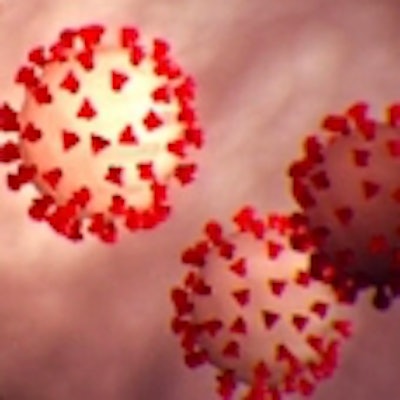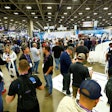
Once again, this past week the Pool & Hot Tub Alliance focused on state and federal issues, expanded communications, and public health outreach. Read the organization's update below:
STATE OUTREACH
MASSACHUSETTS
ISSUE: PHTA continues to work on clarity for the pool and hot tub retail segment, to allow for stores to open in some manner with safe practices in place.
ACTION: In addition to the letter already sent to Governor Baker, PHTA is working to submit information to the reopening advisory panel as well as testimony to the legislature’s joint public health committee, in advance of the task force report that is to be issued on May 18.
RECENT DEVELOPMENTS: The Commonwealth added general guidelines for retail last week that were posted on their essential services FAQ website as follows:
Facilities must be closed to the public, as the allowance is for the fulfillment of remote sales/orders only.
Employees may only be engaged in the packaging and delivery/shipping of phone and online orders, not the manufacturing of those products.
Operating hours must allow for sufficient ongoing off-hour sanitation/cleaning.
All employees must wear face coverings while on-site.
All employees must maintain 6 feet social distancing and employers should stagger employees within the facility to ensure social distancing.
Any deliveries made by employees must be ‘no-contact’ deliveries: items must be left in mailboxes, mailrooms, garages, lobbies, at doorstep, or similar no-contact drop-off points.
Employers must stagger shift start/stop times and breaks/lunchtimes in order to minimize contact.
Facilities must have readily accessible hand sanitizer and handwashing facilities for employee use.
In a closed facility that is used for remote fulfillment, there must be enough space within the facility for all employees present to be able to maintain six feet of social distancing.
In a facility under 10,000 square feet, a maximum of 3 employees may be allowed on the premises at a time.
In a facility between 10,000 – 30,000 square feet, a maximum of 5 employees may be allowed on the premises at a time.
In a facility more than 30,000 square feet, a maximum of 7 employees may be allowed on the premises at a time.
Employee workspaces must be cleaned frequently, following public health guidelines.
Employers must require employees to self-administer a temperature check prior to beginning each shift. Any employee with any symptoms, including a temperature over 100.0 degrees, must not report to work and should self-isolate, contact their doctor, and follow medical guidance.
Employees in quarantine, due to exposure to a known case of COVID-19 or someone with COVID-19 like illness, must remain under quarantine for 14 days since the day of exposure and not report to work.
Employers must strictly adhere to any further workplace guidance.
Facilities found in noncompliance with this order must be closed immediately.
Facilities unable to fully comply with all of these parameters shall not operate.
Additionally, a non-essential business can bring in a small number of employees in order to remotely fulfill online or phone orders as long as they follow the remote fulfillment guidelines above.
FEDERAL UPDATE
As states remain on the front lines of the COVID response and assess resuming economic activities, Congress and the Administration are confronted with the fact that many of the previous COVID response measures are almost depleted or are coming to an end and have only had a partial, if not minimal, impact on stemming the financial crisis playing out across virtually every segment of the American economy. Today's Depression-era level unemployment numbers illustrate the crisis in stark terms: one in four Americans has lost their job. At the same time, COVID-19 cases continue to increase in many areas, and concerns about a resurgence or second wave rise with communities resuming economic activity.
In response, House Speaker Pelosi is preparing a "CARES 2" package for floor action as early as next week. It is expected to be at least another $2T+, and all corners of the Democrat Caucus are being solicited for input into the package. At the same time, Pelosi — anticipating there will be no Republican support for their package — is also urging caution to the progressives in her Caucus that not all proposals will be possible to include, due to both budgetary and political considerations, as leaders discern exactly what House Democrats will be able to pass on their own.
Senate Majority Leader McConnell is putting down his own markers for this package, including "must-do" federal liability protections for business. McConnell shifted his earlier response to the idea of state and local aid where he suggested instead of federal help, states should declare bankruptcy; he is now seeking to limit any state and local funds from being used to bail out states for previous and longstanding "mismanagement of their pension funds," as one example.
The Administration is also expected to weigh in with proposals that rely more heavily on changes to the tax code and regulatory relief, including potentially more changes to immigration and trade policies, to speed the pace of economic recovery, and secure key workforces and supply chains within the borders of the U.S.
Here is what's on the "most likely" list for CARES 2:
More funds — and possible program modifications — for the Paycheck Protection Program (PPP). The PPP again faces the prospect of running out of funds. Additional changes to the program under consideration include focusing resources on "smaller" small business as well as smaller banks and micro-lenders, and adding eligibility for entities 501(c)(6) nonprofit entities such as local Chambers of Commerce, extending the time of PPP coverage, and time and terms for repayment and loan forgiveness.
More aid for state and local governments, between $500 billion to $1 trillion. In addition to significantly more funding, House Democrats are pushing for more flexible use of funding to address general budget deficits, while Senate Republicans are insisting on restrictions on use for pension deficits. Expect changes on eligibility to include municipalities with populations of 50,000 or greater (up from the current floor of 500,000) as well as some portion of these funds dedicated to COVID-19 "hot zone" states.
Additional aid for COVID-19 health care response, testing, and contact tracing. States and business communities alike are seeking federal assistance to ensure widespread availability of testing and contact tracing to support the resumption of economic activity. We expect provisions directly related to the supply chain for testing products and to prepare for treatments and vaccines.
Another proposal worth noting is a suggestion that emerged in the House Appropriations Committee this week that future COVID-related health care funding (including enhanced preparedness, supply chain and stockpile funding needs) be handled in the same way that emergency defense spending is handled through what is known as the Defense Department's "Overseas Contingency Operations" (OCO) account, which allows spending to be provided without counting against annual budgetary limits.
What's on the direct funding "wish list" that may or may not be included?
Another direct payment or payment(s) from the IRS as income support for individuals and families is high on the list. Also under consideration for more funding: Community Development Block Grants; K-12 education and Institutions of Higher Education; tribal, rural and minority communities; mass transit; U.S. Postal Service; mental health grants; broadband expansion, including funding for devices for access to broadband; and rental assistance and homeowner assistance.
In addition to direct federal funding, there are plenty of policy changes on the wish list for the CARES 2 package, including:
Revised terms of PPP as noted above
Liability protections for business
Restoring State and Local Tax Deduction
Student loan debt forgiveness
Vote-by-mail in November's election
Extending Unemployment Insurance past current deadline at the end of June
Extending the Employee Retention Tax Credit
Provisions to shore up multi-employer pension plans
Additional provisions to prevent evictions and foreclosures
Bans on negative credit reporting
Forbearance on loans
Medicaid expansion
Increased FMAP
Anti-price gouging provisions
Increased EIDL funding and eligibility
Subsidized COBRA benefits
OSHA expansion for workers
Expect many Members - both individually and working together in coalitions - to push regional and economic-sector fixes such as aid to farmers, food chain security, relief for automakers, and more.
Scaled-down Economic Injury Disaster Loan program effectively suspends new applications. The Washington Post was first to report that the Small Business Administration's previously established Economic Injury Disaster Loan Program - in the face of overwhelming demand from small businesses - has unofficially changed the maximum loan size from $2M to $150,000 and suspended new applications except those coming from the agriculture sector. The SBA has not acknowledged the change in loan size officially, and simply posted the change in application acceptance on its website without further announcement. In April, Congress infused the program with $50 billion.
Bipartisan legislation to protect local chambers, and other non-profits introduced in the House. A bipartisan group of lawmakers - Representatives Brian Fitzpatrick (PA-01), Chris Pappas (NH-01), Greg Steube (FL-17), and Gil Cisneros (CA-39) - on Wednesday introduced the Local Chamber, Tourism, and 501(c)(6) Protection Act. The Paycheck Protection Program (PPP) aims to help small businesses continue to pay their employees during the pandemic. While 501(c)(3) nonprofits have been eligible for PPP loans, to date, 501(c)(6) organizations like trade associations, chambers of commerce, and professional societies have not been eligible to take advantage of this program. This legislation would make those 501(c)(6) organizations eligible. It is unclear if this bill is being considered for inclusion in the CARES 2.0 package, but it is a priority for a broad variety of organizations.
Communications
Last week, PHTA released reopening guidance to our membership. In addition, we distributed this document to local health departments across the country.
To provide guidance and help you and your company navigate COVID-19, make sure to visit our Coronavirus webpage.
If you have any questions, please reach out to [email protected].









































